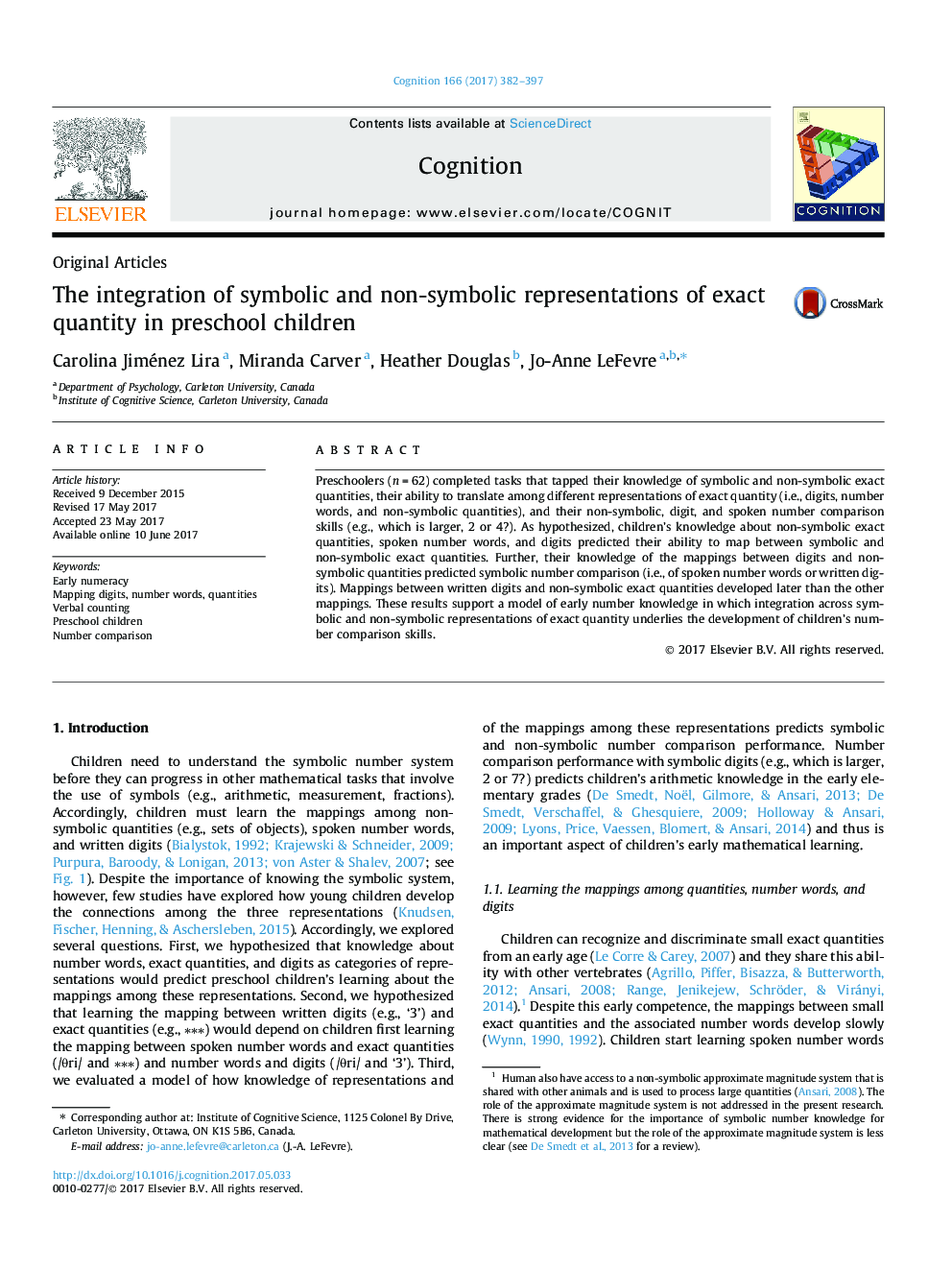| Article ID | Journal | Published Year | Pages | File Type |
|---|---|---|---|---|
| 5041565 | Cognition | 2017 | 16 Pages |
â¢Explored preschoolers' mappings among exact quantities, number words, and digits.â¢Understanding of exact quantity and number symbols predicted these mappings.â¢Digit-word and quantity-word mappings developed before digit-quantity mappings.â¢Children's digit-quantity mapping predicted their symbolic number comparison skills.â¢Numerical development requires integration across symbolic and non-symbolic representations of exact quantity.
Preschoolers (n = 62) completed tasks that tapped their knowledge of symbolic and non-symbolic exact quantities, their ability to translate among different representations of exact quantity (i.e., digits, number words, and non-symbolic quantities), and their non-symbolic, digit, and spoken number comparison skills (e.g., which is larger, 2 or 4?). As hypothesized, children's knowledge about non-symbolic exact quantities, spoken number words, and digits predicted their ability to map between symbolic and non-symbolic exact quantities. Further, their knowledge of the mappings between digits and non-symbolic quantities predicted symbolic number comparison (i.e., of spoken number words or written digits). Mappings between written digits and non-symbolic exact quantities developed later than the other mappings. These results support a model of early number knowledge in which integration across symbolic and non-symbolic representations of exact quantity underlies the development of children's number comparison skills.
